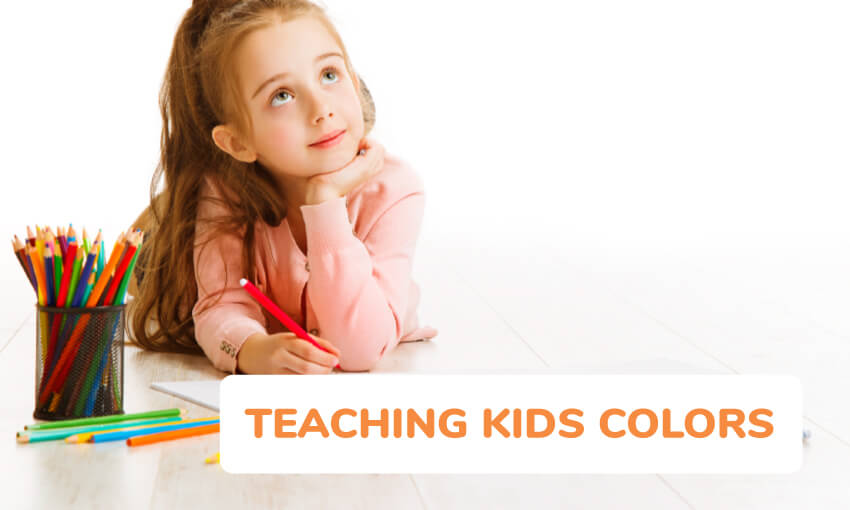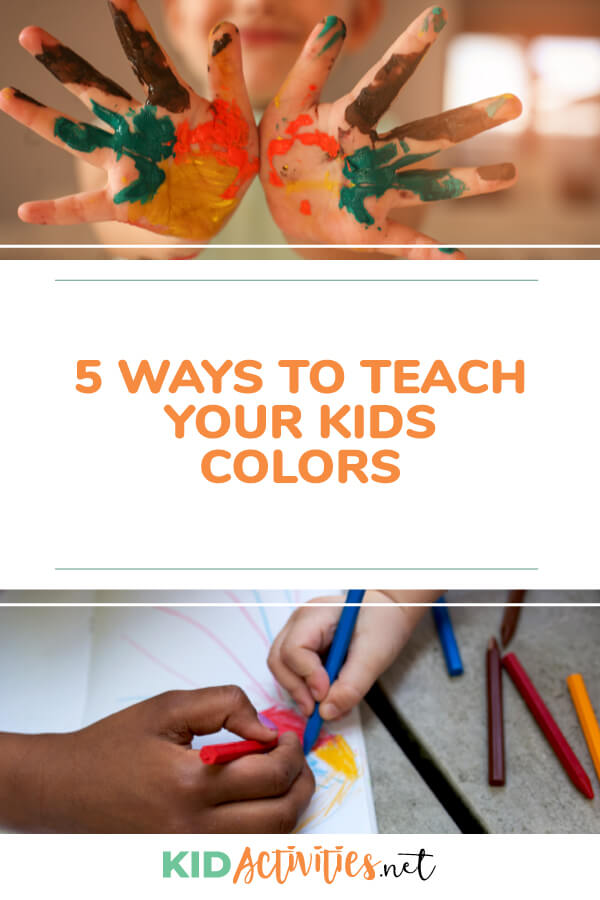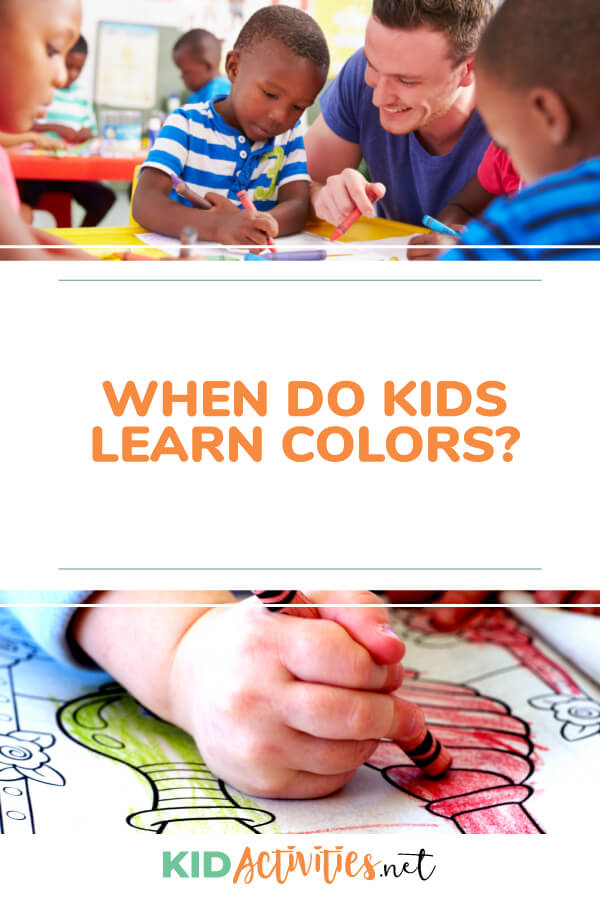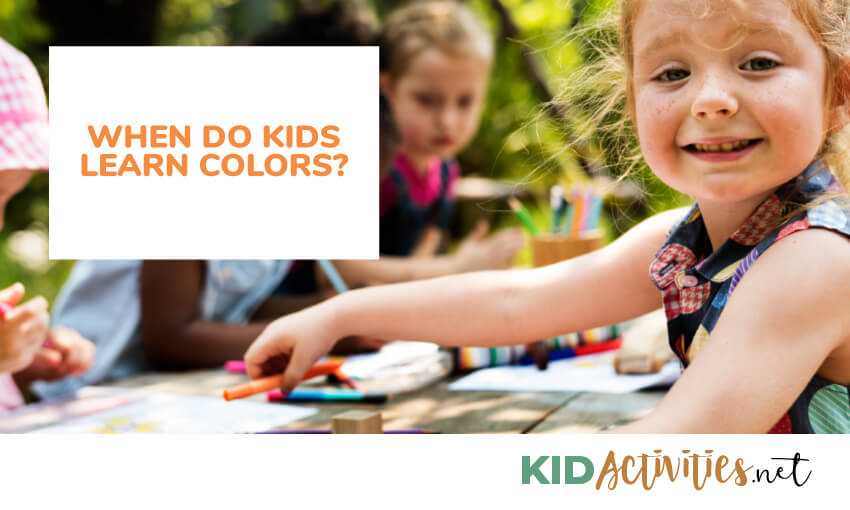Recognizing colors is one of the most exciting times in your child’s development journey. Questions like when should kids know colors? How slow is too slow that it becomes a problem and more? As parents it’s natural to prone to worry when we think our child is behind or maybe doesn’t recognize colors as you expect.
We want to help you figure out when do kids learn to recognize colors, and the general timeline of development in color recognition plus a few sensory activities you can try.
Main points:
- Kids start recognizing colors at around 18 months old, but it could take up to 4 years of age to fully master and being able to verbilze all the colors.
- If your child is 4 years old and has trouble recognizing colors consult with your paediatrician or eye doctor.
- Using color games and activities from a young age will encourage kids and teach them to know colors faster – just don’t over due it, and push too hard.
When Do Toddlers Learn Colors
Your child’s ability to see color develops by four months. Since that time, you probably noticed your baby loves bright colors. Attraction to these colors is common for babies and seeing these colors aids in their ability to discern color later in life.
The time it takes kids to learn their colors varies just like any other development stage. No child is the same, but kids recognize colors at around 18 months. This development continues through age two. By age three, most children should know at least one color.
The Centers for Disease Control recommends that children know multiple colors by age four. Some kids may even know more colors than that, but your cue to know if your kid is on track or not is the ability to identify at least one color by age three.
At the same time that children are starting to recognize color, they are also beginning to develop the ability to discern between sizes, such as big and small, and shapes.
NOTE – Every child is different and develops at their own paste, however, if your child is 4 and can’t recognize at least one color, consult with an eye doctor
Learning colors by age
Let’s dive into what to expect by each age of your child in relation to learning to recognize colors.
Age 0 – 1
A newborn will not really see anything in the first few months. Babies mostly don’t recognize colors and even not shapes and are having a hard time seeing clearly at all. By age 3 months they should start seeing more clearly and start seeing shapes and some shades of colors.
NOTE – they do NOT see colors really, they just start to see differences in shades of colors.
At about the 5 months mark they should be able to recognize differences between red and green, but they will obviously won’t be able to verbilize it yet or give indication they know the difference.
If you notice your baby can’t focus on one object, even for a little bit, or it seems like he doesn’t react well to movements in front of his eyes – consult with your doctor or pediatrician immediately.
Age 1 – 2
Some children will be able to recognize one or a few colors by 18 months, but it is not that common, between these ages your baby will start to understand what are colors, and notice the differences between each color or obvious shades, while still at this early age most children will not be able to recognize colors most of the time, you can browse the games and activities below to start practicing and helping them get familiar with the concept of colors.
Age 2 – 3
By this age your child should start recognizing at least a few colors, not necessarily by names, but by pointing to specific colors when called on, at least a few. This is the stage when there is a boost to color recognition and it all starts to piece together, especially if you exercise and work on it proactively
Age 3 – 4
As mentioned before, by age 4 most kids will learn colors and will be able to recognize most of not all major colors and they should be able to do it by their names.
It is no reason to panick if your child misses a few, but if he or she can’t even recognize one color and seem to not understand the differences between them, you should seek help from a doctor to examine further.
Activities and games to Teach Your Kids Colors

1. Paint with Your Kids
If you are wondering how to teach colors to toddlers, a simple way to improve your kids’ abilities to understand colors is to interactively immerse them into it.
Paint with your children. Start with bright colors like yellow or red, as young children naturally like those pigments. You can focus on one color a week to make it easier.
As your child develops, add in more colors. Buy glitter glue, stamps, or craft items of the corresponding color that you can add into the mix. As your toddlers grow, you can talk about how the colors mix and form new colors.
2. Play a Color Sorting Game
Make learning colors into a game with color sorting, such as Skoolzy Rainbow Counting Bears. It comes with red, yellow, blue, green, orange, and purple bears, along with coordinating cups. Kids can simply have fun putting the bears into the right cups and using the scoop to get the bears back out.
You can also have your kid role the large dice to see which color bears to sort. Teaching your kids to sort is also an important development marker at age two. Let your kids come up with their own rules to the game as well.
This game aids your child’s development by reinforcing the difference between an object and a color by giving them various objects of the same color.
3. Get Your Kids Active to Learn Colors
When you need a game that reinforces color learning that you can play indoors or outdoors, try something physical. Fill a bucket with colorful objects. Choose individual items that have a consistent color throughout to avoid confusing your kids.
Try colorful hairbrushes or small stuffed animals that are all one color. Call out a specific color. Have your kids pull a corresponding item out of the bucket and run to you with it.
You can make it more adaptable to the outdoors by using different color water balloons. Then have them run and throw it. Your kids will want to get the right colors to keep playing the game.
4. Use Color Matching Toys
Matching colors together can help reinforce the concepts of internalizing color learning. Kidzland’s Color Matching Egg Setlets kids crack open an egg to see different colors.
To put the eggs back together, kids have to choose the same color of eggs. As your kid grows, this can be useful for pretend cooking and learning to count as well.
5. Try Flash Cards to Learn Names
Along with other activities that help children learn matching and identification, flashcards can help with naming. A stack of cards with an object of a certain color and a written name reinforces the color words, especially as your child learns the alphabet and starts putting words together.
When you go through the flashcards with your child, sound out and point to the words as well. Although you can use flashcards with any toddler, this is a great way to teach older toddlers about colors.
Your toddler learns colors over a substantial period of time. The rate of learning is different for individual kids. Use the guidelines of knowing at least one color by age three and several by age four as a quick rubric for your child’s development.
There are lots of fun ways you can engage with your child to teach colors as well as technology like learning tablets. Try these methods to spur your children’s color learning and development.
Issues in Learning Colors
Some parents believe their children know their colors better than kids actually do. This is because it can be difficult for children to separate color from its object. If you use the same objects to teach and describe colors over and over again, your child likely associates the color name with the object.
They do not understand the difference between the color and the noun of association. For instance, when you call an object a red ball, your child understands the entire name of the ball as red ball instead of separating the color name from the object name.
Developing the ability to discern color from the object takes time. Many parents use shapes and colors together to teach their children about both. This is a great idea, but your child likely does not distinguish the green from the triangle. The color concept becomes too abstract for them to comprehend.
Another problem parents face is when kids know color words without being able to properly match those words to color. Keeping in mind that kids develop at different rates, many children develop linguistic abilities before they internalize color.
Do not worry if your toddler knows and speaks color words but does not accurately identify those colors with an object. If your kid calls her red fire engine yellow, it is normal. Consider it a good sign that your child knows those color words already. Your job is to help your child properly associate language with a color.
Developmental Issues in Learning Color
Some disorders can contribute to slower development in learning colors. Children with an autism spectrum disorder might have problems in communicating that they know a particular color. Instead of knowing color words and not being able to give that color substantive meaning, a child on the spectrum can cognitively understand and identify colors but be unable to express the name of the color verbally.
If your child has attention deficit disorder, it might be difficult to get them to pay attention when teaching colors. This can also lead to delays. For children with either of these challenges, try to avoid distractions and keep anxiety levels low when playing games or doing activities to help your kids learn their colors.
Colorblindness can also limit a child’s ability to learn colors correctly. Colorblind kids have problems distinguishing between particular colors. The specific problem colors can vary from person to person.
The extent to which colorblindness affects someone can also differ substantially. The problem amplifies when multiple colors are on top of one another, such as a red bow on a green shirt. If you have concerns, it is best to see a doctor.
Different Aspects of Learning Colors
To understand how to teach colors to toddlers, it is important to keep in mind the different facets of color learning. When your kids learn their colors, it is more than memorization.
They show the ability to identify, match, and name different colors. When you say a color out loud, your child should be able to choose the corresponding color. Your kid should also be able to see two objects of the same color and be able to put them together.
Finally, your child should learn the correct name for each color. You might find that your child excels at some but not all aspects of color interpretation. That is okay, and development occurs in time.
Your child has an easier time learning primary colors before venturing into different gradients of color. Start small when you teach your children about color and build on their knowledge over time.



